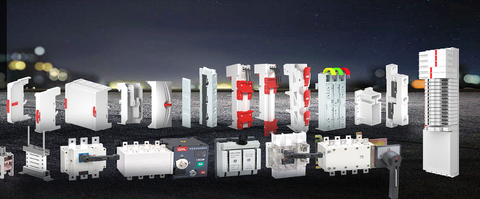Small DC fuses have the protection function of reliably cutting off the fault current of the DC current loop, and are widely used in the world. In China, AC fuses or fuses have been used as replacements for protection devices for DC circuits. Due to its unstable ability to cut off DC arcs, poor ampere-second characteristics, poor selectivity, etc. The performance of the DC circuit does not meet the requirements of the DC circuit, resulting in frequent failures of the DC circuit, which seriously threatens the safe and reliable operation of the electrical equipment in the power system.
The contact closing current and long-term current-carrying current of small DC fuses are similar to those of ordinary AC small fuses, and there are no special requirements. However, the breaking current of small DC fuses is very different from that of AC small fuses. DC is constant because the contacts of the small DC fuse open to extinguish the DC arc. The larger the current and time constant, the more difficult it is to break the arc.
When the contact of the small DC fuse is broken, an arc is generated immediately at the fracture, which not only hinders the timely breaking of the circuit, but also damages the contact. At this point, the main problem is the electrical burn of the contacts, which is different for AC and DC circuits. In order to understand the arc extinguishing performance of AC/DC fuses, it is first necessary to analyze the arc generation process and arc extinguishing ability.
Small DC fuse manufacturers believe that when the contacts are broken, the distance between the two contacts is very small, the electric field strength is very high, and it is easy to generate high heat and strong electric field. Free electrons in the metal escape from the cathode surface and head towards the anode. At the same time, free electrons collide with neutral gas molecules in the electric field, making them excited and free to generate positive and negative ions and electrons. As they continue to move towards the anode under a strong electric field, they also hit other neutral molecules. Therefore, a large number of charged particles of positive and negative ions and electrons will be generated in the contact gap, which will make the gas conduct electricity and form a hot electron flow, that is, an arc.

Small DC fuse manufacturers believe that there are dissociation and dissociation factors after the arc is generated. The dissociation is due to the large amount of thermal energy generated in the arc gap, mainly thermally dissociating the gas. Especially when the metal vapor on the contact surface enters the arc gap, the gas thermally decomposes more significantly. The higher the voltage, the greater the current, that is, the greater the arc power, the higher the arc temperature, and the stronger the dissociation factor of the arc. Dissociation occurs because the dissociated positive ions and electrons meet in space and recombine to re-form neutral gas molecules. The high-density high-temperature ions and electrons will also diffuse into the surrounding medium with low density and low temperature, resulting in a decrease in the concentration of ions and free electrons in the arc gap, the arc resistance increases, and the arc current decreases, thereby causing heat Dissociation is weakened.
Small DC fuse manufacturers believe that to extinguish the arc, it is necessary to suppress the ionization factor and strengthen the ionization factor, such as pulling the arc into a narrow gap and increasing the distance between the moving contact and the grid. Reduce the diameter of the arc, strengthen the diffusion and cooling effect, elongate the arc, or set up obstacles inside the arc to recombine local ions and electrons, that is, if the ionization effect is greater than the ionization effect, the arc can be extinguished.

